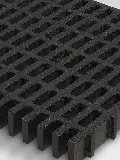loading...
- No. 9, Xingyuan South Street, Dongwaihuan Road, Zaoqiang County, Hengshui, Hebei, China
- admin@zjcomposites.com
- +86 15097380338
- Welcome to visit our website!
Optimal Sizes for GRP Water Tanks to Meet Storage Needs
Understanding GRP Water Tank Sizes A Comprehensive Guide
Glass Reinforced Plastic (GRP) water tanks have gained popularity in various sectors, including commercial, industrial, and agricultural applications. The durability, lightweight nature, and corrosion resistance of GRP make it an ideal choice for water storage. However, selecting the appropriate tank size is crucial for efficient water management. This article aims to provide insights into GRP water tank sizes, helping you make an informed decision for your specific needs.
Why Choose GRP Water Tanks?
Before diving into sizes, let’s briefly explore why GRP water tanks are preferred. These tanks are constructed using a composite material that combines glass fiber and resin, resulting in a robust structure that can withstand harsh environmental conditions. GRP water tanks are resistant to UV light, chemicals, and temperature variations, making them suitable for both hot and cold water storage.
Furthermore, they can be manufactured in various sizes and shapes, allowing flexibility in design and installation. Whether you need a small tank for residential use or a large tank for industrial applications, GRP tanks can meet diverse requirements.
Factors Influencing Tank Size Selection
When determining the appropriate size for a GRP water tank, several key factors must be considered
1. Water Demand Assess your daily water usage. For residential homes, consider the number of people living in the household, typical water consumption, and any additional needs, such as irrigation or other water-related activities.
2. Purpose of Use The intended use of the water tank significantly affects size. For instance, tanks used for agricultural irrigation may require larger capacities than those used for residential drinking water.
grp water tank sizes

3. Space Availability Evaluate the area where the tank will be installed. GRP tanks are available in various dimensions and can be customized to fit specific spatial constraints.
4. Future Expansion Consider potential future needs. It might be wise to select a slightly larger tank if you anticipate an increase in water demand.
Common GRP Tank Sizes
GRP water tanks come in a range of standard sizes, typically from a few hundred liters to several million liters. Common sizes include
- Small Tanks Ranging from 500 liters to 5,000 liters, these tanks are suitable for individual homes, small businesses, or water storage for livestock.
- Medium Tanks Ideal for schools, hospitals, or larger homes, medium tanks typically range from 5,000 liters to 50,000 liters.
- Large Tanks Used in industrial settings, large GRP tanks can hold anywhere from 50,000 liters to 1 million liters or more, catering to considerable water needs for facilities or large-scale irrigation.
Conclusion
Selecting the right size of a GRP water tank is essential for efficient water management and utilization. By considering factors such as water demand, purpose, available space, and future growth, you can make an informed choice that meets your needs. GRP water tanks offer a versatile, durable, and cost-effective solution for effective water storage. Whether you are constructing a new home, expanding your business, or optimizing agricultural practices, investing in the right GRP water tank size will ensure a reliable water supply for years to come.
-
Transform Your Spaces with FRP Grating SolutionsNewsNov.04,2024
-
The Versatility and Strength of FRP RodsNewsNov.04,2024
-
The Excellence of Fiberglass Water TanksNewsNov.04,2024
-
The Benefits of FRP Grating for Your ProjectsNewsNov.04,2024
-
Elevate Your Efficiency with FRP Pressure VesselsNewsNov.04,2024
-
Welcome to the World of FRP Pressure VesselsNewsOct.12,2024
-
Unveiling the Future of Filtration: Why FRP Filter Vessels are a Game ChangerNewsOct.12,2024
